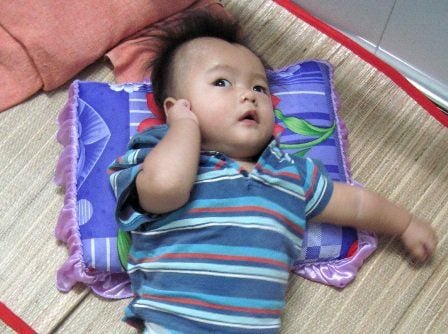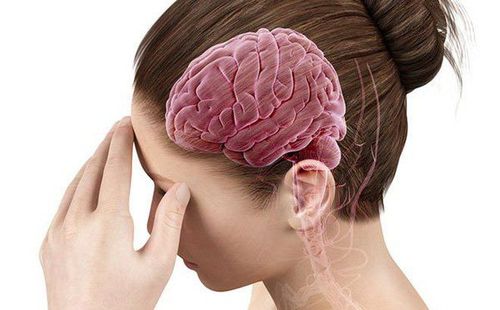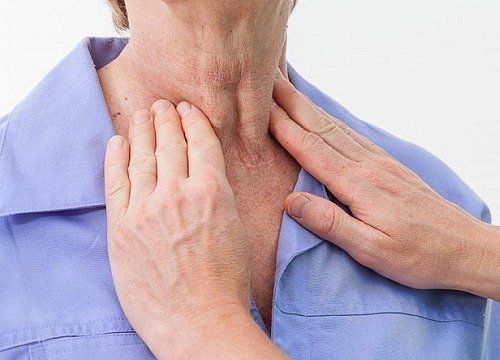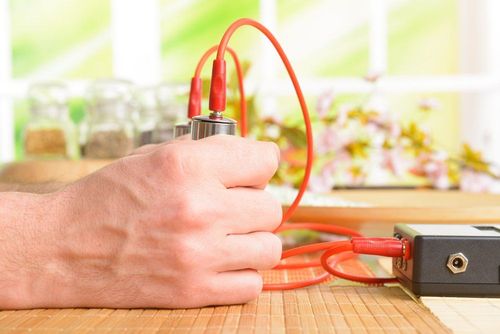This is an automatically translated article.
Disorder is a decline or disorder in the swallowing process in the mouth, pharynx and esophagus, affecting the patient's ability to eat or drink safely. The disease can appear at any age, from young children to the elderly, in which young children and the elderly are the two subjects most at risk. Currently, medicine has found a solution to treat swallowing exercises with biofeedback.1. What is a swallowing disorder?
Dysphagia is a condition in which a patient spends a lot of time and effort pushing food or liquid from the mouth down to the stomach. In some cases it is not even possible to swallow food.The process of swallowing and breathing occurs together in the pharynx, so a problem with one of these processes, or the lack of synchronization of swallowing and breathing can affect the patient's ability to protect the respiratory tract when swallowing and eat safe liquids and foods.
Swallowing disorder in adults and the elderly is not a disease but a secondary consequence of diseases originating from neurological, neoplastic, structural, psychological, postoperative, congenital ( in young children) or due to treatment.
2. What is biofeedback?
Biofeedback is a treatment method using devices that allows an individual to practice altered physiological behavior for the purpose of improving health status and automatic functioning.These devices accurately measure activity that normally cannot be checked such as brain waves, electrocardiogram, breathing rate, muscle contractions, and skin temperature,... and then give feedback. information quickly and accurately to users.
The display of this information - physiological changes that often occur in patients along with changes in thinking, feelings and behavior - promotes the desire to change physiological activities. Over time, these changes can be maintained without any additional support.
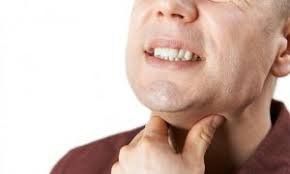
Chỉ định tập nuốt bằng phản hồi sinh học khi người bệnh bị chứng rối loạn nuốt
3. When is biofeedback indicated to practice swallowing?
Patients with swallowing disorder in pharyngeal phase due to diseases: vascular accident, traumatic brain injury, brain tumor, Parkinson's disease, encephalitis, multiple fibrosis, Wilson's disease... Pharyngeal paralysis due to causes of damage to the X nerve or the branch of the X cord Having Guillain - Garcin syndrome, after surgery for neck tumors (thyroid tumors, esophageal tumors).. Paralysis of the pharynx after high cervical spine surgery level C2 - C3. Vocal cord paralysis4. Swallowing technique by biofeedback
PerformerDoctor Technician Vehicle needs to use
Electromechanical recorder, on the surface with display screen. 2 electrodes are used to stick the skin above the nail bone and 01 reference electrode is used to stick under the chin. Conduct:
Step 1: Stick the electrode paste at the patient's neck skin. Step 2: Start the machine, instruct the patient to do it, and at the same time observe on the electromyography display on the biofeedback machine: Observe the sEMG signal at rest for 30 seconds – the signal is normal when below 10mV.
Step 3: Ask the patient to perform forced swallowing from 3 to 5 times, monitor on the machine the highest sEMG index, then set the target sEMG index to achieve in each exercise is at least 80%

Trong quá trình tập nuốt bằng phản hồi sinh học cần theo dõi và cho bệnh nhân nghỉ ngơi nếu mệt
Ask the patient to swallow forcefully to exceed the set sEMG threshold at least 10 times by having the patient do this while observing on the display screen.
Rest for 30 seconds on each swallow then repeat 5 times in the same way
Exercise 2. Mendelsohn's test
Ask the patient to perform a vigorous swallow and keep the hyoid bone at its highest position above the set sEMG threshold for a period of time. longest time. Practice swallowing at least 10 times. The technician watches as the patient performs the tests and interprets the images on the surface electromyography display to help the patient understand the correct procedure. Gradually increase the difficulty of the exercise by gradually increasing the threshold of sEMG and lengthening the time that the hyoid is in the highest position. Rest for 5 minutes each exercise and then repeat. Note
Monitor the patient's progress, instruct how to do it correctly, memorize the results. If the patient feels dry mouth when having to swallow continuously, he can give the patient small sips of water with a spoon. Let the patient rest if tired. At the Rehabilitation Department of Vinmec Times City International Hospital, there is a function of physiotherapy and rehabilitation for all inpatients and outpatients for patients in Hanoi and the northern region. North (both Vietnamese and foreigners), in the fields of Internal Medicine, Surgery, Pediatrics ...
Faculty has the strength of strong techniques in Rehabilitation, effective rehabilitation. support effective treatment for cases of a number of musculoskeletal and spinal diseases, in order to increase the success rate of the treatment, limit the recurrence to the lowest level and speed up the healing process. short-term treatment.
Vinmec International General Hospital is equipped with a system of modern machinery and equipment, effectively supporting the treatment process with a high success rate, helping musculoskeletal, musculoskeletal, and spinal nerves to recover. rehabilitation and mobility. There are many good, highly skilled doctors with full practice certificates, along with a team of well-trained technicians who are very dedicated in the process of treatment and rehabilitation. Therapy and rehabilitation programs give good results, meeting the needs and desires of customers.
Please dial HOTLINE for more information or register for an appointment HERE. Download MyVinmec app to make appointments faster and to manage your bookings easily.
Reference source: Ministry of Health



